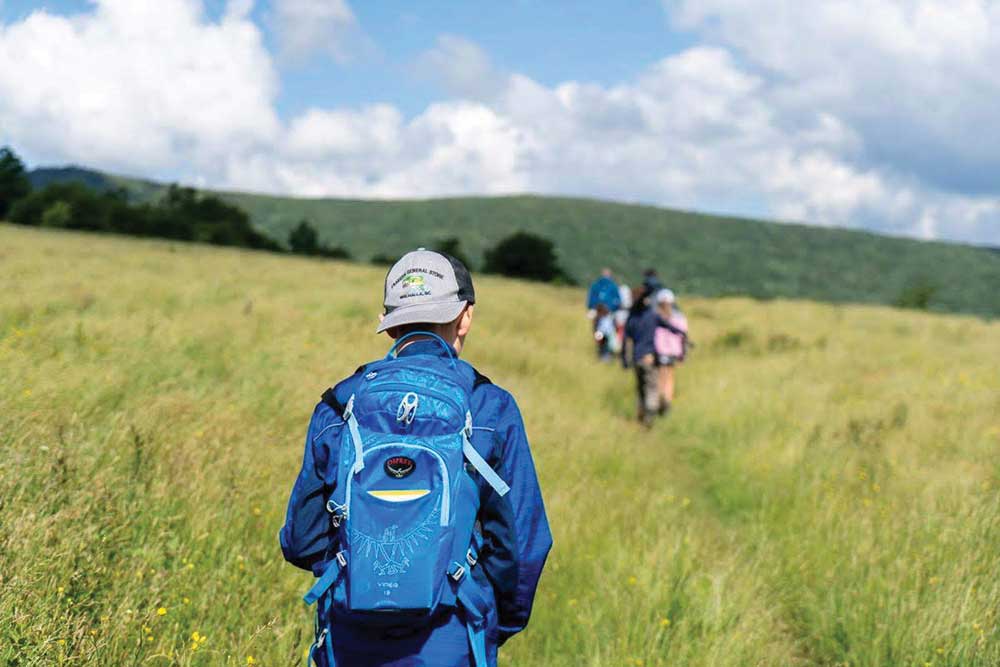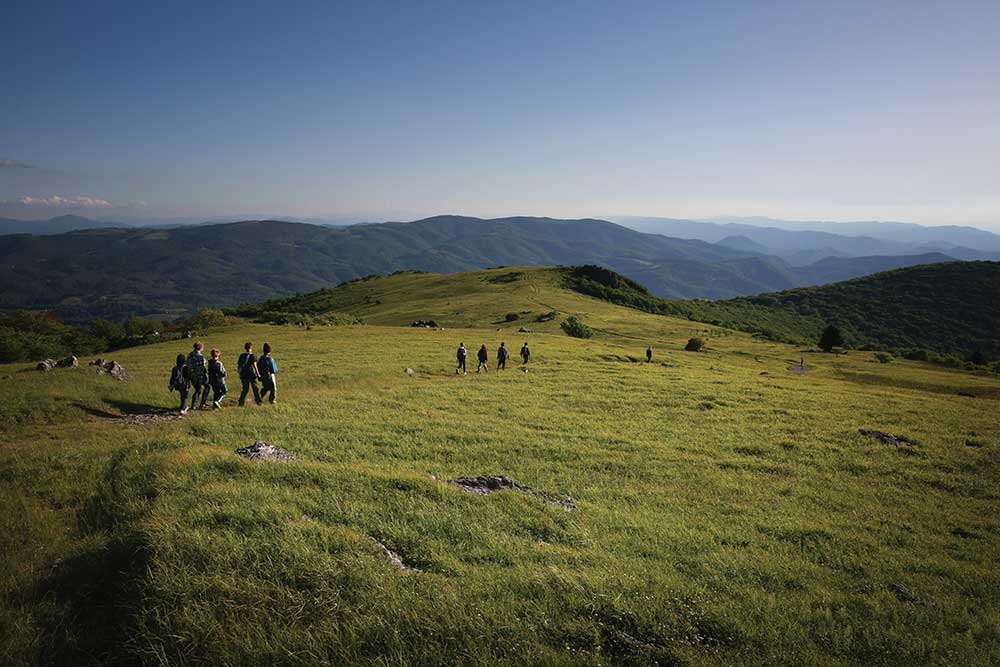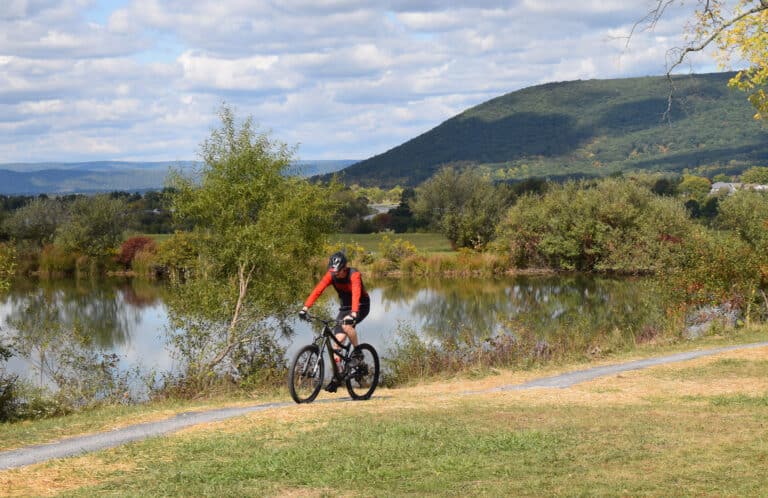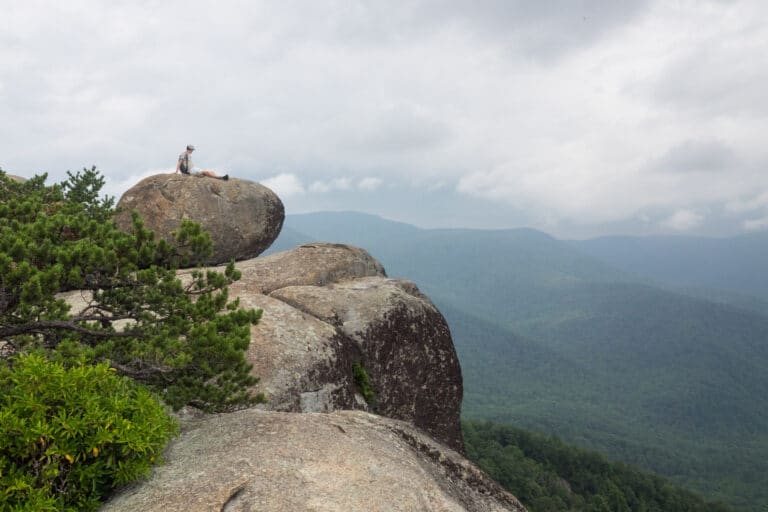“We are a natural history education organization,” says Blue Ridge Discovery Center outreach coordinator Rachel Caro.
Exploring the Blue Ridge Discovery Center
The chimney swifts are keeping Aaron Floyd up at night. Not that the executive director of the Blue Ridge Discovery Center—a non-profit organization “dedicated to exploring, discovering, and sharing the natural history of the Blue Ridge Mountains”–doesn’t have plenty on his mind. The BRDC is in the midst of a capital campaign that, when complete, will fund the completion of a world-class residential educational facility in the mountains of southwest Virginia. They are, in fact, 91% of the way there, and if they can raise two-hundred thousand more dollars by May a matching grant from the Cabell Foundation will cover the rest. It’s a lot of pressure. But the December morning I meet Floyd and outreach coordinator Rachel Caro, the birds seem to be of equal concern. The issue is how to restore the chimney where a drift of swifts have decided to roost while simultaneously protecting the birds.
“An ornithologist suggested we wear a sombrero filled with seeds,” Floyd tells me with a smile, “just to habituate the chickadees to people.”
We’re laughing about it in the cabin that currently serves as the BRDC’s home, but it’s exactly the sort of thoughtful and out-of-the-box thinking the center is bringing back to this part of Appalachia, an approach that combines a nearly forgotten ethic of living in harmony with the land with up-to-the-minute science.
Founded in 2008, the BRDC has made an art form out of combining ecological awareness with the sort of outdoor activities that make living in the region such a pleasure. There is a youth summer camp that teaches fly fishing. Another camp is geared toward ornithology (“The best week of my life,” my eleven-year-old son said on return), another takes campers on a 30-mile, four-day paddling trip down the New River. In 2020, three “Science in Nature” camps will teach “citizen-scientists” how to conduct field research in one of the world’s most biologically diverse areas. The skills being taught range from orienteering to kayaking to conducting acoustic surveys of birdlife. Which means an entire generation of young people are putting down their phones and picking up a compass and map. How many American children know what it’s like to snorkel a mountain stream in the company of salamanders? Well, in this part of Virginia, quite a few actually.
Besides the camps, there are naturalist rallies. There are annual counts of butterflies and birds; there is a Hawk Watch where volunteers monitor the fall migration. There are retreats and native landscape programs, service projects and research initiatives. Right now, the programs are scattered over three counties, ranging from Abingdon to Galax to the summit of Mount Rogers. That will soon change.
In 2017, the BRDC acquired what was once the Konnarock Training School. Built-in 1924 by a departing timber company and Lutheran Missionary Society, it operated as a girl’s boarding school from 1925 to 1959. The idea was to teach poor Appalachians the skills necessary to survive a modernizing world, particularly one in which much of the natural resources had been cut, planed, and shipped elsewhere. It was, as Aaron puts it, “a consolation prize for the community.” It seems fitting that the old school building will soon be teaching the sort of environmental attentiveness those “modernizing” forces helped to erase.
But there’s work to be done. On the morning we visit, the school is a study in gorgeous decay, a vast shell, as empty as it is grand. Here is the cafeteria where the tables were pushed aside for dances. Here is the staircase where a visiting alumnus remembers sitting with her schoolmates while President Roosevelt spoke to the nation about the attack on Pearl Harbor. The sense of history is palpable, from the chestnut bark siding to the stained-glass windows of the chapel. It’s also freezing.
“Right now it seems to radiate cold,” Aaron tells me.
And it is certainly cold, but it’s also stunning, the lofted ceilings, the hardwood floors—the “good bones” are immediately evident. Those bones will soon be fleshed into a dining hall and kitchen, a meeting hall and stage. There will be a classroom and a library/natural history museum. The second and third floors will be housing for guests and an artist-in-residence. The basement will house archives and research laboratories.
When the restoration is complete, it will be a gathering place: all of the BRDC’s programs will migrate to the grounds. But for now, it’s a gathering place of critters. Besides the swifts, there are bats, red squirrels, chipmunks skittering on the front porch, a turkey that flew through an open window. There is even a family of screech owls that, having entered through woodpecker holes, are now roosting in the walls. “We’ll have to find a way to keep the owls,” Floyd tells me.

Which is very much the ethos of the place.
“We’re trying to reconnect people with the place they live,” Floyd tells me back in the office. “That’s the first step.” The second is to foster a sense of value and appreciation. The final step is to create a community of stewards. The center’s official mission statement is “to inspire curiosity, discovery, and stewardship through the wonders of the Blue Ridge.” The curious thing here is that to bring our understanding of the natural world into the 21st century, we have to go back to the 19th, to a time before what are euphemistically called “extraction resources” turned much of Appalachia into a colony. It was coal to the northwest. Here in southwest Virginia it was timber. The land around the Konnarock School was clear-cut in the early 20th century. Now it has been reclaimed by nature.
But the reclamation isn’t complete. The staff are busy restoring not only a building but also the wetlands that once surrounded it. To help sustain the population of native brook trout, and with the help of local schoolchildren, they are propagating spruce seeds for riparian corridors along streambanks. Having confirmed the presence of Northern saw-whet owls, they are preparing owl boxes to assess and support the population. When the work is complete, the nine acres will feature a nature trail, field station, cabins, and sites for primitive camping, all flush against 200,000 acres of national forest.
In Appalachia, we are notorious for venerating a brief period of history when jobs—mining, timber—were plentiful and towns full. We are equally notorious for lamenting its passing. While it’s true that was an important moment in our history, it wasn’t the only one. At our heart, Caro tells me, “we are a natural history education organization.” That natural history—a history measured in a deep time that extends back far beyond even the chestnut rings of the trees that once surrounded the school—is our real inheritance, a gift of skills and place-based knowledge, a gift the good people at the Blue Ridge Discovery Center are making certain isn’t lost.








